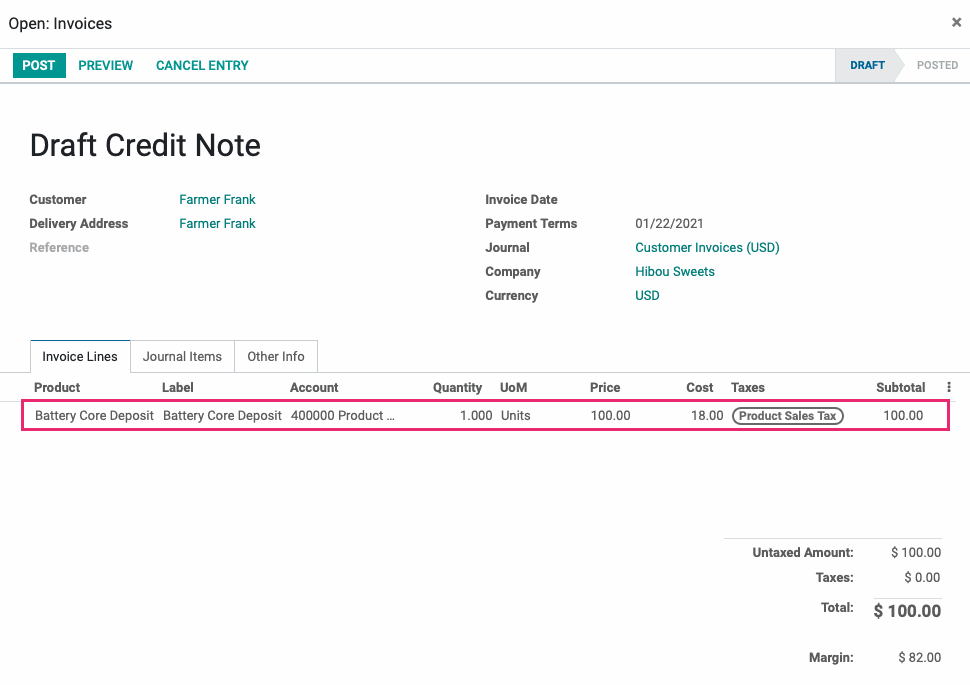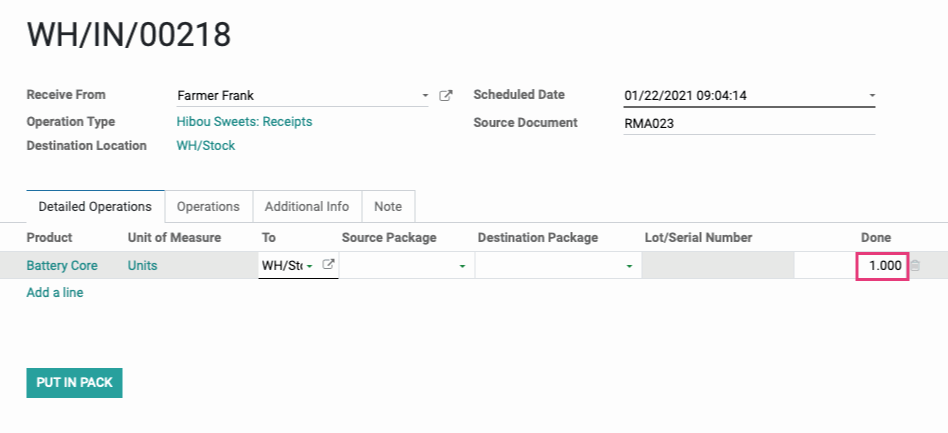Hibou Odoo Suite: Return Merchandise Authorization (RMA): Return Merchandise Authorization (RMA): Core Returns
Repository Versions:
Purpose
This document covers the Core RMA return process using the Hibou RMA application for Odoo 13. We'll cover product configuration, submitting a Core RMA through the portal, and processing the Core RMA on the backend.
Getting Started
First things first! Let's install the correct module. Navigate to the Apps application.

Once there, remove the Apps filter, then search for 'Product Cores'. This module allows you to charge customers for cores. Click INSTALL.

You will be taken to your home screen. Return to the Apps application and repeat the installation process for the module named 'RMA - Product Cores'. This module allows you to process core returns.

You can also install 'Website Product Cores' which removes the trash can icon from the website, disallowing customers to remove the item from their cart.

And, finally, to extend functionality, install 'Product Core Reporting.'

Good to Know!
The Hibou RMA - Product Cores module requires the Product Cores, RMA Sale, and Hibou Professional modules. However, if you do not already have these applications installed, Odoo will install them for you during this application's installation!
Process
To get started, navigate to the Inventory app.

Product Configuration
There are three products involved in the Core RMA functionality:
Core Product: This is the product being purchased.
Core Deposit: This is the deposit your customer pays upfront when they purchase the Core Product; it will be refunded when the customer returns the Core (used product).
Dirty Core: This represents the used product being returned. It is technically the same Product that was purchased, but it must be inventoried as a used product upon return.
We will configure these products below.
Core Product
From MASTER DATA >PRODUCTS, select your core product, then click EDIT.

Under the Sales tab, set the Invoicing Policy to "Delivered Quantities".
Note that the RMA Sales section in this tab refers to standard returns of this product, and not Core returns. You can disregard this section for the purpose of setting up Core returns.
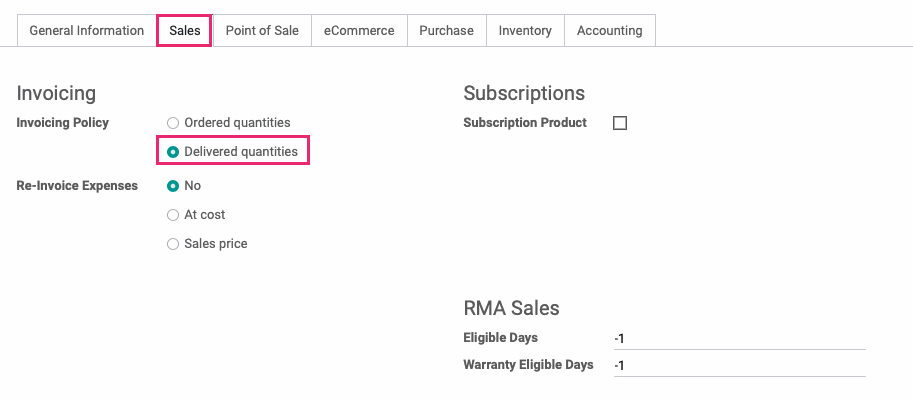
Under the Inventory tab, scroll to the bottom of the page, and you'll see a Cores section which was added when the RMA module was installed. Enter a value for each of the following fields:
Product Core Deposit: The service product representing the fee your customer will pay upfront when they purchase the base product.
Product Core: The storable product representing the product that is returned.
Product Core Return Validity: The number of days, from purchase, that the used Core can be returned.
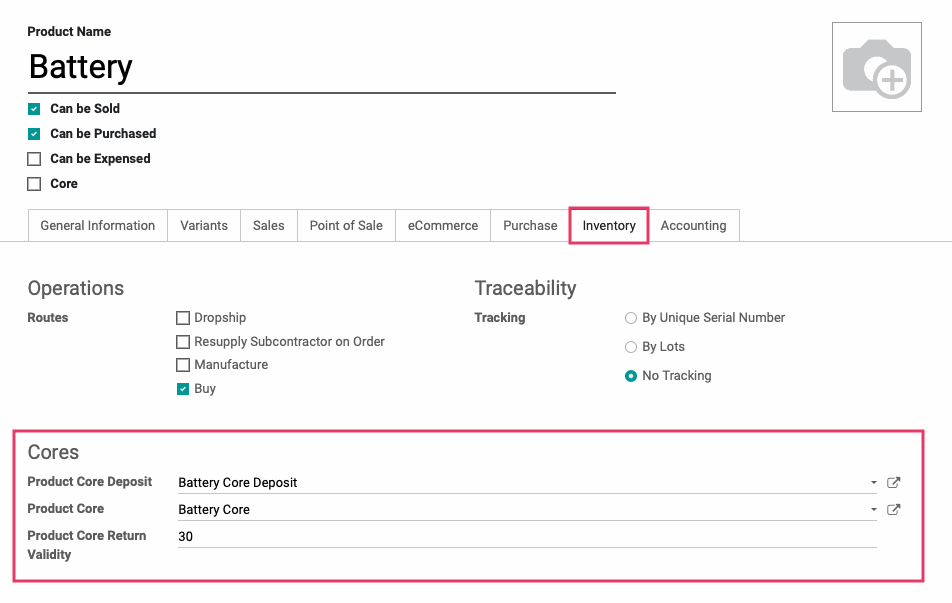
When you're done, click Save.
Core Deposit
From MASTER DATA >PRODUCTS, select your deposit product, then click EDIT.

Under the product name, check Core. Under the General Information tab, set the Product Type to "Service".
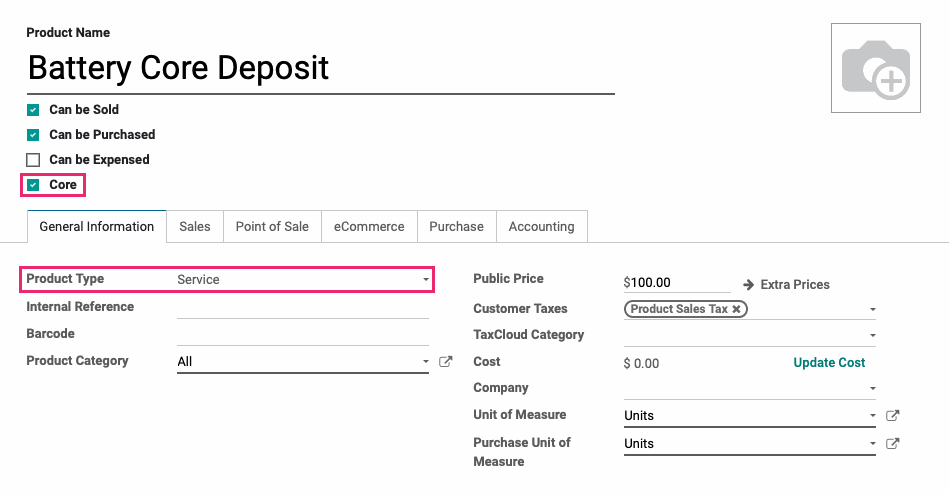
Under the Sales tab, configure the following fields:
Invoicing
Service Invoicing Policy: Set to "Milestones (manually set quantities on order)".
Service Tracking: Set to "Don't create task".
Re-Invoice Expense: Set to "No".
RMA Sales
Eligible Days and Warranty Eligible Days: Set both fields to -1. This is because we'll never want to initiate an RMA on a deposit itself.
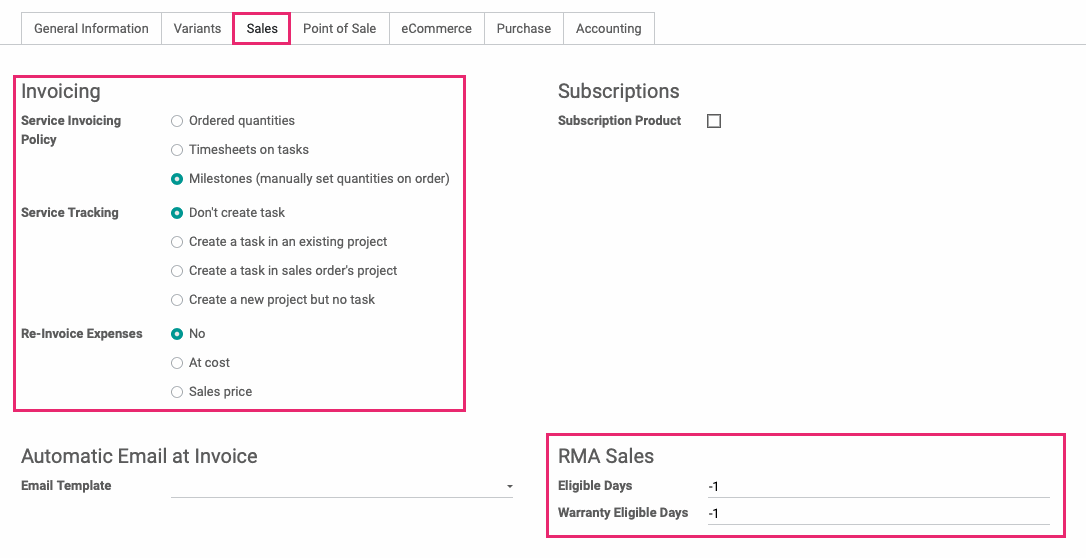
When you're done, click Save.
Dirty Core
From MASTER DATA >PRODUCTS, select your used core product, then click EDIT.

Check Core, and set the Product Type to "Storable Product".
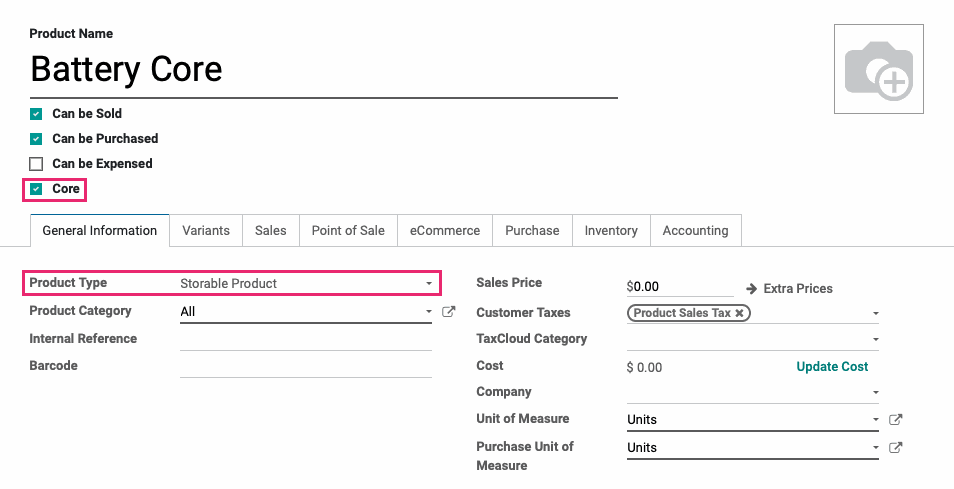
Under the Sales tab,
RMA Sales
Eligible Days and Warranty Eligible Days: Set both fields to 0 for unlimited, or enter the number of days the item is eligible for returns.
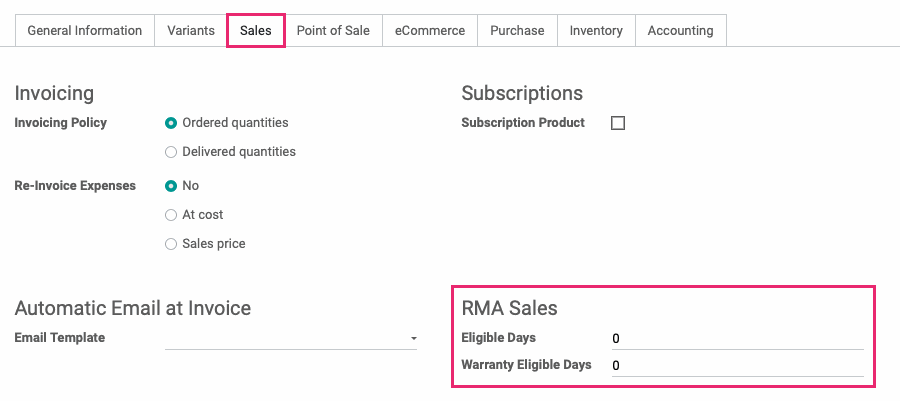
When you're done, click Save.
Good to Know!
Any time you save or confirm a Sale Order containing a product that has Cores, the Core Deposit product will be added automatically. These products will be kept in sync because they are at a 1-to-1 ratio.

Initiating a Core RMA through the Portal
On the portal side, a customer can initiate their own RMA (given it has been enabled on the RMA Template). On the My Account page, click RMA.
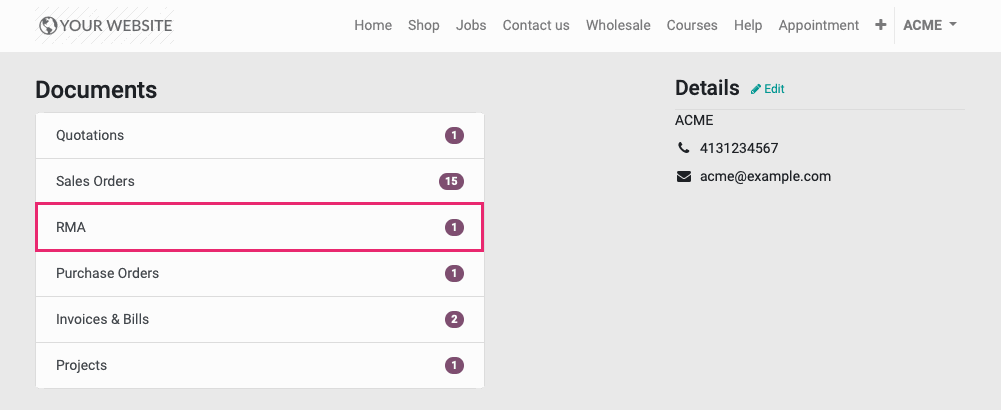 Once there, click Create New RMA.
Once there, click Create New RMA.

Select Product Core Return from the modal window.
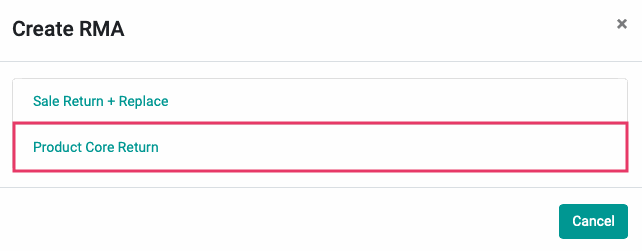
On this page, the customer will see a list of core products, and their respective quantities, eligible for return. By clicking the information icon, they will see this data broken down further by sale order and date.
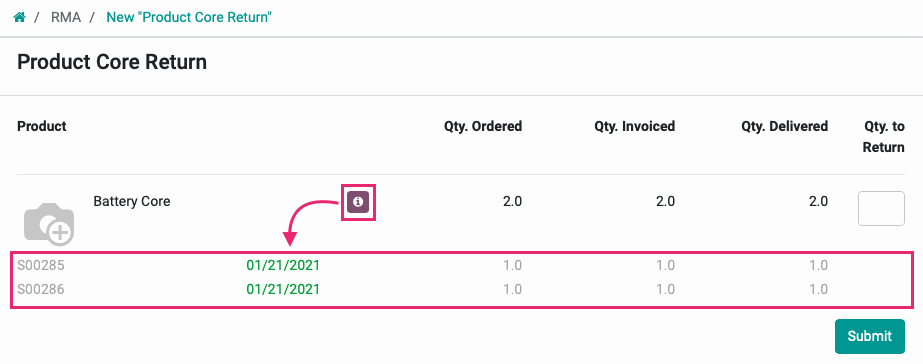
Processing the Core RMA on the Backend
Navigate to the RMA app.

From the list, select the RMA to process. It will be in the "New" State.

Review the RMA, then click Confirm to accept it. The RMA template we're using is configured only to create an inbound picking because we're not sending anything back to the client. Once confirmed, scroll down to see the Inbound Picking that was created. You're now ready to receive the dirty Core.
Once the dirty core is received, return to this RMA and open the inbound picking. This is the transfer that represents the customer return.

On the inbound picking, click Edit.
Under the Detailed Operations tab, enter the number of product received in the Done column. Chen click Save, then click Validate.
At this point, the dirty core enters your inventory, and you can return it to the manufacturer or process it in another manner. Use the breadcrumbs to navigate back to the RMA.

Once there, click Done to complete the RMA.
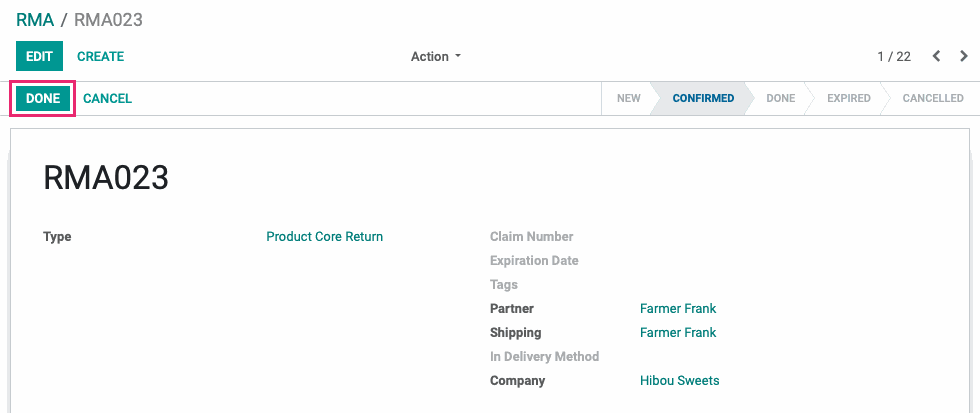
Since the RMA template is configured to issue a refund on completion, you'll see a draft credit note created on the RMA.
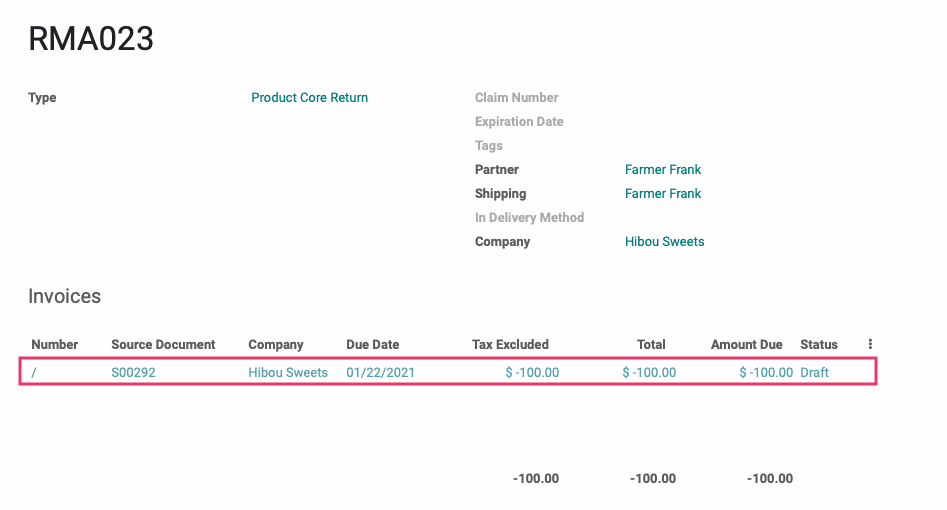
If you click into the credit note, you'll see the refund has been issued for the Core Deposit product. The refund can then be posted and paid.
